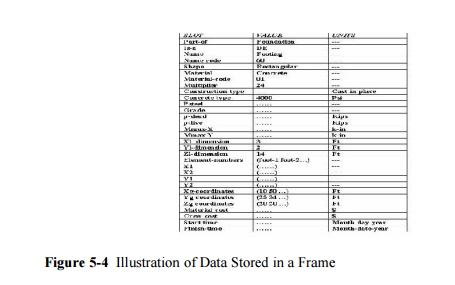Chapter: Civil : Construction Planning And Scheduling : Organization and Use of Project Information
Some Conceptual Models of Databases

Conceptual Models of Databases
While the relational model offers a considerable
amount of flexibility and preserves considerable efficiency, there are several
alternative models for organizing databases, including network and hierarchical
models. The hierarchical model is a tree structure in which information is
organized as branches and nodes from a particular base. As an example, Figure
5-2 illustrates a hierarchical structure for rented equipment costs. In this
case, each piece of equipment belongs to a particular supplier and has a cost
which might vary by the duration of use. To find the cost of a particular piece
of equipment from a particular supplier, a query would first find the supplier,
then the piece of equipment and then the relevant price.
The
hierarchical model has the characteristic that each item has a single
predecessor and a variable number of subordinate data items. This structure is
natural for many applications, such as the equipment cost information described
above. However, it might be necessary to construct similar hierarchies for each
project to record the equipment used or for each piece of equipment to record
possible suppliers. Otherwise, generating these lists of assignments from the
database illustrated in Figure 5-2 would be difficult. For example, finding the
least expensive supplier of a crane might involve searching every supplier and
every equipment node in the database to find all crane prices.

The
network model or database organization retains the organization of information
on branches and nodes, but does not require a tree of structure such as the one
in Figure 5-2.This gives greater flexibility but does not necessarily provide
ease of access to all data items. For example, Figure 5-3 shows a portion of a
network model database for a building. The structural member shown in the
figure is related to four adjoining members, data on the joints designed for
each end, an assembly related to a room, and an aggregation for similar members
to record member specifications.

While the early, large databases were based on the
hierarchical or network organizations, the relational model is now preferred in
many applications due to its flexibility and conceptual simplicity. Relational
databases form the kernel for large systems such as ORACLE or SAP. However,
databases distributed among numerous servers may have a network structure (as
in Figure 5-3), with full relational databases contained at one or more nodes.
Similarly, "data warehouse" organizations may contain several
different types of databases and information files. For these data warehouses,
more complicated search approaches are essential, such as automatic indexing of
multi-media files such as photographs.
More
recently, some new forms of organized databases have appeared, spurred in part
by work in artificial intelligence. For example, Figure 5-4 illustrates a frame
data structure used to represent a building design element. This frame
describes the location, type, cost, material, scheduled work time, etc. for a
particular concrete footing. A frame is a general purpose data representation
scheme in which information is arranged in slots within a named frame. Slots
may contain lists, values, text, procedural statements (such as calculation
rules), pointers or other entities. Frames can be inter-connected so that
information may be inherited between slots. Figure 5-5 illustrates a set of
inter-connected frames used to describe a building design and construction
plan. Object oriented data representation is similar in that very flexible
local arrangements of data are permitted. While these types of data storage
organizations are active areas of research, commercial database systems based
on these organizations are not yet available.


Related Topics